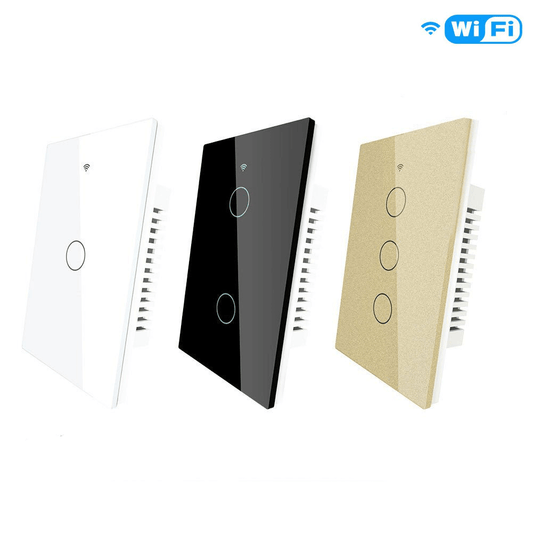In the fast-growing world of home automation and smart technology, smart light bulbs are designed to seamlessly integrate with various smart home systems and devices, offering more than simple on/off functionality. They promise to be personal, efficient, and even fun.
Since the launch ofsmart light bulbs, consumers have received mixed reviews, but from a functional point of view, the so-called smart light bulbs can achieve basic dimming functions, and some also support adjusting the color of the light.
Of course, there are more functions, such as connecting with speakers , monitoring and other equipment combination. Of course, there are also smart light bulbs that can be controlled by mobile phones or mobile terminals, providing more control methods in use, which can provide some convenience for daily life.

What are Smart Light Bulbs and How Do They Work?
Smart light bulbs are a revolutionary advancement in lighting technology that allow users to control lights through mobile apps or voice commands. These innovative devices are designed to make our lives easier and more convenient, while also providing energy efficiency.
So how do smart light bulbs work? Unlike traditional light bulbs, smart light bulbs are equipped with built-in wireless technology, such as Wi-Fi or Bluetooth, enabling them to communicate with other devices. This connection enables users to remotely control their lights using a smartphone, tablet or voice assistant.
To set up smart light bulbs, you'll need a compatible smart home hub or bridge, which acts as a central hub for all your smart devices. Once the hub is connected to your Wi-Fi network, you can use the manufacturer's app to pair your smart light bulbs with the hub.
Advantages of Using Smart Light Bulbs
There are numerous benefits to transitioning from conventional lighting to smart lighting, beyond the novelty of being able to adjust the settings with your smartphone. Smart lighting offers simplicity, giving you more control over your lighting and allowing you to create different moods in your space.
Remote control and automation
One of the main benefits of smart light bulbs is the ability to control them remotely, usually through a smartphone app. You can turn them on or off, dim them, and even change their color from anywhere in the world. This feature is especially useful when you forget to turn off the lights or want to set the mood before heading home.

Energy Efficiency
Smart bulbs typically use LED technology, which are inherently more energy efficient than traditional incandescent or CFL bulbs. Plus, with features like scheduling and motion detection, they can ensure lights are only on when needed, further reducing energy waste.
Personalization
Smart bulbs come in a range of colors and brightness levels. Whether you're looking to set the mood for movie night or create a tranquil ambience for meditation, personalizing your lighting experience is within reach.

Integrate with other smart devices
These bulbs can often be integrated with other smart home devices, such as voice assistants, smart thermostats, and security systems. This integration can create a more cohesive and efficient smart home ecosystem.

Scheduling and routine setting
You can set routines for smart bulbs. For example, you might have the lights dim in the morning to help you wake up, or dim in the evening as a bedtime reminder.

Disadvantages of Using Smart Light Bulbs
Smart light bulbs offer a range of features, such as remote control, color-changing functionality, and integration with smart home systems. However, their use has several disadvantages:
Initial cost
For many people, one of the most significant hurdles is the initial cost. Although prices have dropped over the years, smart bulbs are still more expensive than traditional bulbs.
Compatibility issues
Not all smart light bulbs are compatible with all light fixtures and home automation systems. Before buying, it's crucial to make sure the bulbs you choose will work with your existing setup, or you may need additional hubs or devices.
Security concerns
As with any internet-connected device, smart light bulbs can be vulnerable to hacking if not properly secured. It is critical to keep your firmware updated and use strong and unique passwords for linked accounts.
Lifespan issues
While LED bulbs typically last longer than traditional bulbs, the electronics added to smart bulbs can sometimes fail before the LEDs themselves, rendering the bulb unusable.
Reliance on connectivity: Smart light bulbs rely on Wi-Fi or other forms of connectivity to access their full functionality. If there is a problem with the network or service provider, you may only be able to manually operate the bulb, or in some cases not at all.
Conclusion
There are several benefits to using smart bulbs instead of traditional light bulbs. One advantage is the ability to adjust brightness levels and create personalized lighting effects.
However, it's important to consider some drawbacks as well. Smart bulbs tend to be more expensive compared to their traditional counterparts, and they rely heavily on technology for their functionality.
Smart light bulbs promise to combine convenience, energy efficiency and personalization. They are a testament to how technology is reshaping the most fundamental aspects of our living spaces.
However, as with any new technology, they come with their own set of challenges and considerations. Ultimately, whether or not to switch to smart light bulbs is a personal decision that should be based on individual needs and preferences.







